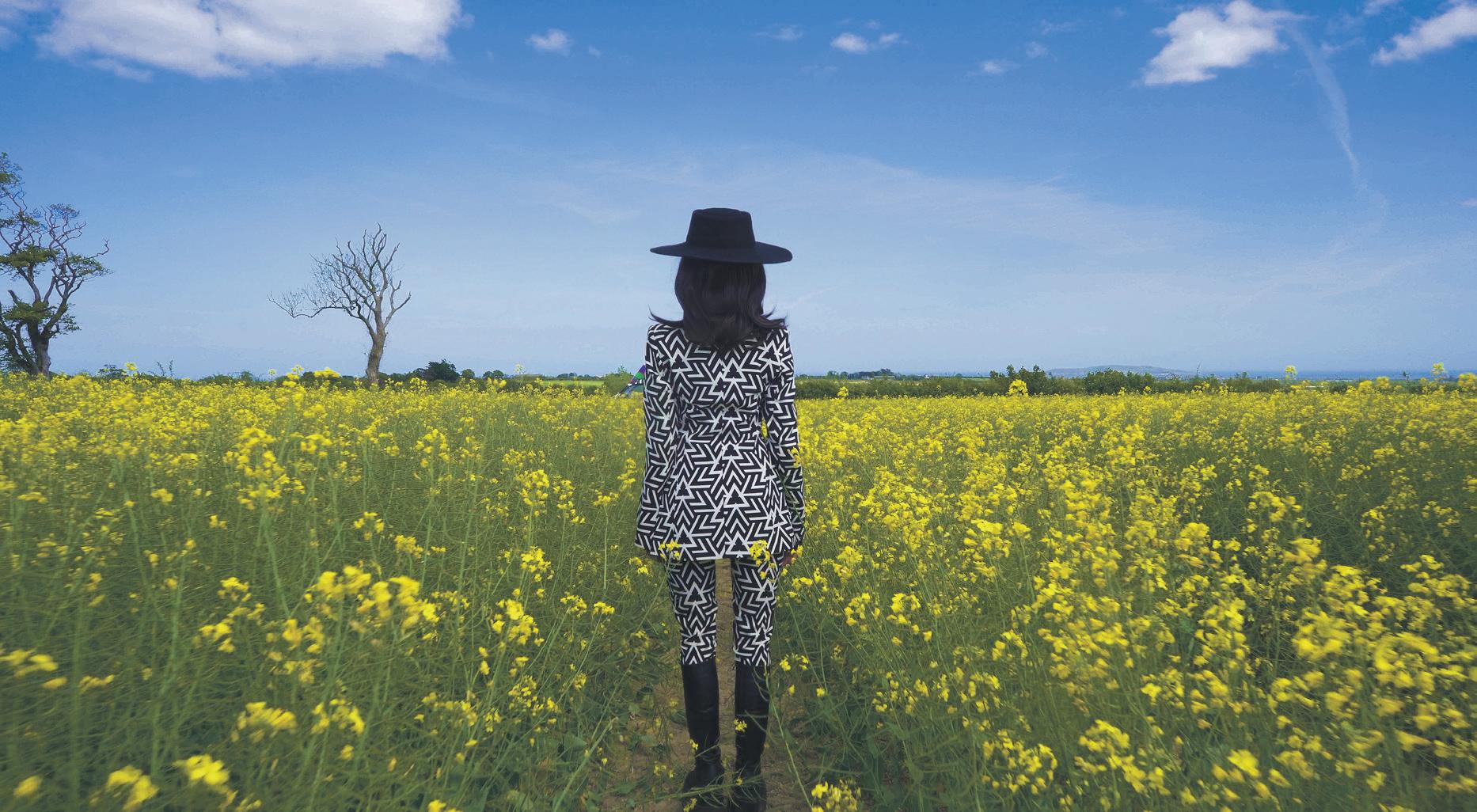28
Visual Artists' News Sheet | January – February 2021
Artist-Led
Artist Collectives THREE RECENTLY ESTABLISHED ARTIST COLLECTIVES TALK ABOUT THEIR FORMATION AND AMBITIONS. also involves drawing and performance in which colour, repetition, chance, pattern and large-scale textiles play central roles. Helen Blake and Elizabeth Kinsella are both painters who examine the central role of colour conversations in novel ways. Blake’s small-scale, patterned work stresses rhythm, chance and formalism as working methods for process and contemplation to guide the work’s evolution. Conversely, Kinsella’s large-scale artworks reference everyday materials to question the materiality of paint in relation to three-dimensional space. However, both artists find form through grid, pattern and the interaction of planes. Jane Fogarty’s painting installations consist of paper and pigment compressed into hand-formed shapes and works on paper. Fogarty relates to Kinsella’s concerns about the relationship between 2D and 3D, yet the colour in Fogarty’s paintings is derived from her sculptural works. Susan Connolly uses the materiality and history of abstract painting as primary sources. For Connolly, it is the idea and not the craft that becomes the subject and materialises into a visual conversation. Stephanie McGowan’s practice explores the overlapping materiality of natural and man-made environments and the tensions that may arise from disconnecting, manipulating and reassembling everyday materials. The idea of utilising natural materials as subject and concept is also acknowledged in my own ongoing body of work, titled ‘Office of Public Wonder’. Through my focus on ‘pathic aesthetics’, my site-responsive drawing practice engages the atmospheric, material, temporal and corporeal aspects of sites in developing the work. Recently, N I N E published a pocket-sized exhibition, featuring selected images from each artist. The publication is featured in Dublin Art Book Fair 2020: Design as an Attitude, curated by critic and author Alice Rawsthorn, which took place online and physically at Temple Bar Gallery + Studios (23 November – 6 December). N I N E is currently working towards a group exhibition and the delivery of a webinar. We are also considering who our next number one guest might be! Kiera O’Toole is an artist based in Sligo and a PhD researcher at Loughborough University. nine-artists.com @nine_artists N I N E publication; courtesy of the collective
NINE nine-artists.com
N I N E IS A nationwide visual artist collective who came
together online in May 2020. Elizabeth Kinsella originally invited four artists from the North West to exhibit in the Hyde Bridge Gallery in Sligo, but the exhibition was postponed until 2021 due to COVID-19. After many discussions, we invited four additional artists whose practices engage with materiality and process. The name of the group is N I N E and consists of eight artists, each with a corresponding number from two to nine, leaving number one free for our regular guests (artists, writers or curators). The painter Natalia Black was our first invited guest. Through weekly online meetings, the collective provides a supportive network for the exchange of ideas and concerns around practice and professional development. As a collective, N I N E explores notions of embodiment
and materiality as the basis for aesthetic experiences, particularly within the current virtual climate. We question how matter, which resounds in our bodies as a felt sense, can form and inform our making. Through making, we query the ways in which humans may engage with materials in our world, and what it means to make something from these materials. Although N I N E is a collective, we each have an individual visual language with a developed personal relationship to materiality. Converging points of interest are making, systems, tactility, pattern, repetition, ritual, networks, agency, collectivism, site, wonder, time and space. Our outcomes do not necessarily privilege material matter over concept but employ multiple strategies to engage with the aesthetic qualities of materials. The diverse practices of the group find intrinsic commonalities within materiality. Collectively, we are driven by multiple interests including drawing, painting, performance, sculpture, site-specific art and socially-engaged practice. Celina Muldoon’s practice examines themes of identity, memory and surveillance, using the political agency of her body. Muldoon is known for her performances, but she notes that drawing is embedded within her practice and lies at the heart of every performance. Laura McCafferty’s interdisciplinary practice
Angelica angelica.network
ANGELICA AIMS TO amplify the voices of self-identify-
ing women and non-binary artists of minority cultural and minority ethnic backgrounds who are based on the island of Ireland. It was conceived and is managed by Moran Beennoon and Jane Morrow. Had we infinite space and time, I think we would have framed this piece as a conversation. We talk a lot. We have to get this right. The network was born of a Twitter exchange in June 2020, in which Moran posted a series of resources for visual art professionals to start embodying diversity in their programmes, and the challenges of finding artists at all stages of their careers from different parts of the island: “I wish I had a resource in the form of a list of POC women artists based in Ireland/NI”. We continued our conversations, and Angelica was born. We created it to lead to fruitful relationships and new opportunities, designed to help curators and programmers to work with a more diverse art community. For us both, the network represents a coming together of





















